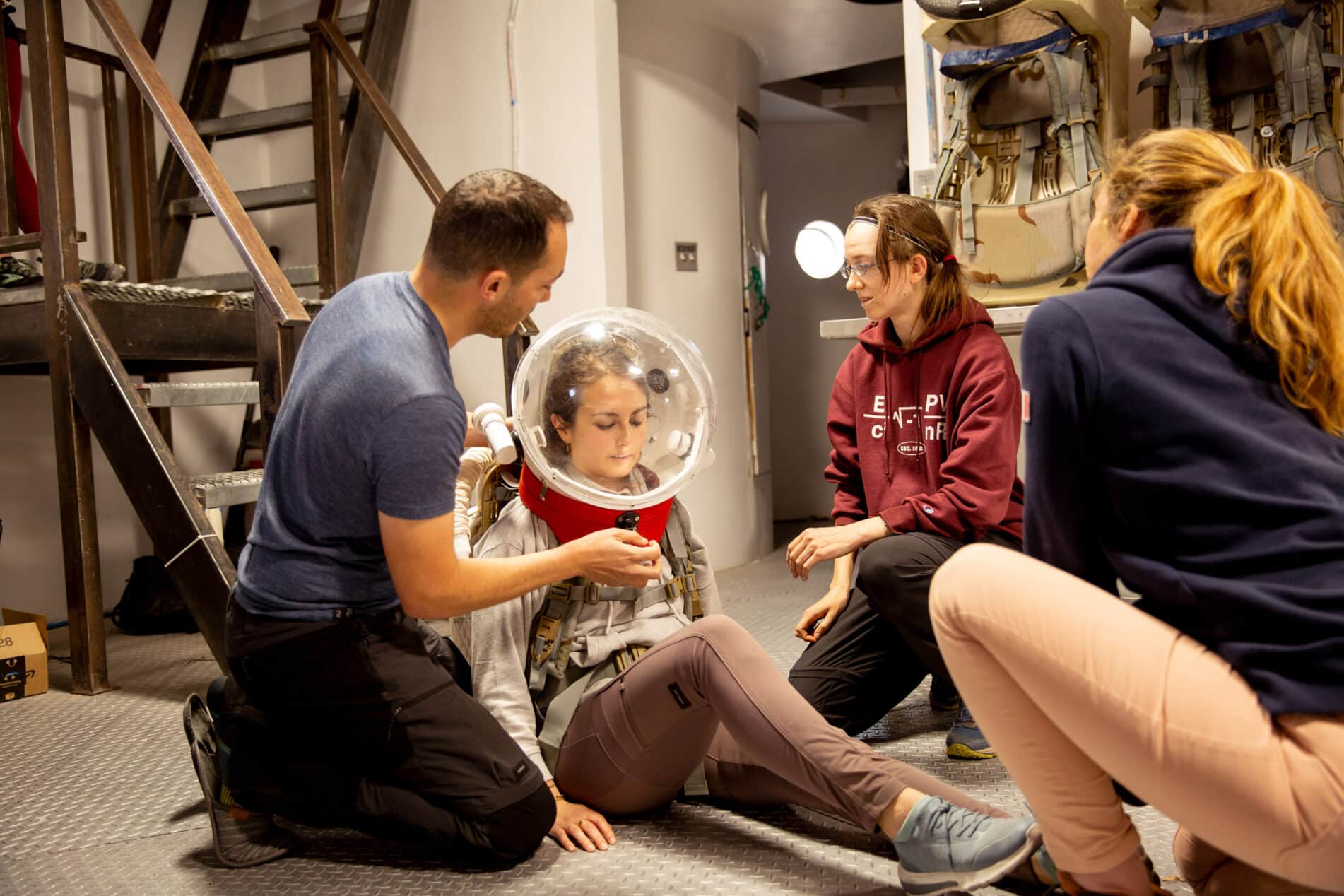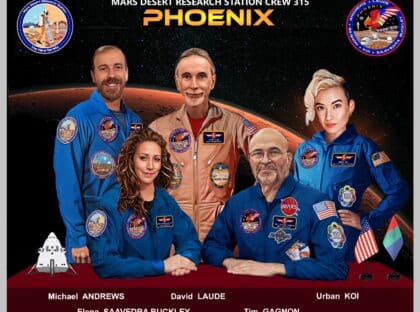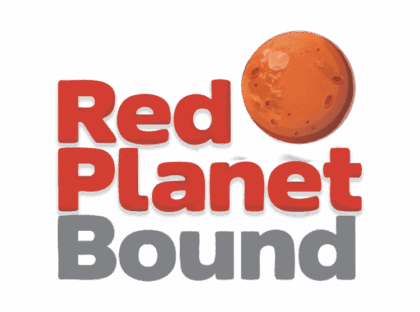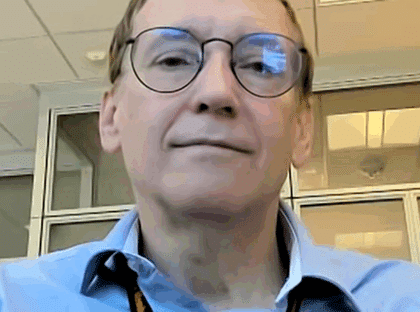
By Kris Davidson, Guest Writer, Journalist, MDRS Crew 261
During the zenith of the Age of Exploration, spanning the 14th to 16th centuries, a captivating sway of the monstrous and mythical prevailed over cartography. This period, signified by insatiable curiosity, saw audacious explorers venturing into uncharted territories. The maps of that era, intricate renderings of the known and the unknown, served as essential tools for navigation and understanding Earth’s expansive geography. They bore witness not only to discovered territories but also to those remaining undiscovered, often marked by vibrant depictions of sea monsters and mythical beasts.
The phrase ‘here be dragons’ was born amidst this rich, imaginative artwork, inscribed onto the surface of unexplored territories on maps. Its historical usage on maps is, in fact, rarer than one might anticipate, with the Latin phrase “HC SVNT DRACONES,” translating to “here are dragons,” explicitly appearing only on the eastern coast of Asia on the Lenox Globe and its copper-casting counterpart, the Hunt-Lenox Globe, from the early 16th century. Despite its limited appearances, ‘here be dragons’ has endured through the ages, transcending its cartographic origins to symbolize the unexplored and unknown—much like a mythical sentinel guarding the enigmas awaiting human discovery.
From the dawn of human civilization to the present, our innate propensity for crafting intricate tales in art and written stories has remained steadfast. Scholars from diverse fields—anthropology, psychology, literature—have labeled our species “Homo narrans,” underscoring the critical role of narratives in human life. In the context of exploration, such narratives often echo our primal fear of what exists beyond our familiar confines.
The sea dragons once populating the edges of ancient parchment maps have withdrawn, transforming, and migrating into the boundless cosmic expanse as we chart our course towards the stars. Our movies and science fiction tales teem with imaginative extraterrestrial life—sometimes problematic, sometimes benign—spawning from our relentless creativity. Other metaphorical dragons take the form of tangible threats, such as cosmic radiation lurking beyond Earth’s protective atmosphere. As we continue to decode scientific mysteries, these dragons will ultimately be subdued, their fearsome traits reduced to comprehensible phenomena. However, for now, they remain shrouded in mystery, retaining their ability to incite fear, serving as stark reminders of the unknown that lies ahead of our exploration.
But, it’s not all pointless fluff. Fantastical stories—our myths, tall tales, and legends—are surprisingly useful, especially for advancing science. Stories serve as the foundation of our identity, reflecting our past, present, and future selves. They also possess a certain fluidity, ebbing and flowing through time, vacillating between realms of fact and fantasy.
Profound truths often carry a weight too formidable to confront directly, prompting us to clothe them in gentler layers of imaginative fiction. Myths enable us to communicate even the most challenging narratives to young minds without causing harm. Fiction can temper the harsh edges of reality, soothing and pacifying our experiences while conveying significant messages and lessons. The process of mythologizing pivotal narratives can be seen as a protective encasing, a cocoon of sorts, enabling our deepest existential queries and concerns to travel through time, across the generations of human beings we are interconnected with, unharmed.
Storytelling serves as a potent instrument for human progress, especially visible in the realm of space exploration. Amidst the complex matrix of the universe, filled with its myriad equations, laws of physics, and theorems, storytelling acts as a conduit. It transforms seemingly abstract aspects of science into digestible narratives that bridge the gap between intricate scientific knowledge and the human thirst for understanding.
Storytelling is intrinsic to the development of critical cognitive abilities in humans, fostering imagination, encouraging empathy, and enhancing memory. It has long been the medium for humans to connect, share experiences, and form social bonds, laying the foundation for culture, tradition, and shared identity. Stories make complex realities accessible and comprehensible, helping us navigate the world and giving meaning to our lives. Through tales of characters overcoming challenges, we learn valuable lessons about problem-solving and resilience.
Joseph Campbell’s work, particularly his concept of “The Hero’s Journey,” offers insight into the role of mythology in storytelling. Many narratives about space exploration follow this archetypal journey. The hero is typically thrust from their familiar world into the cosmos, endures a series of trials, makes significant discoveries, and returns to Earth bearing knowledge or technology with transformative potential. Films like Christopher Nolan’s “Interstellar” exemplify this pattern, making narratives about space exploration more relatable and fostering our connection with the cosmos. When viewed through Campbell’s framework, these stories augment our understanding of science and its role in human progress. They inspire wonder, curiosity, and a profound appreciation for the universe, possibly leading to increased interest in science and technology, more students pursuing STEM careers, and public support for space exploration.
Recently, I had the privilege of serving as the Crew Journalist for Transatlantic Mars Crew 261 at the Mars Desert Research Station in Utah, a role that afforded me an intimate view of the intricate interplay between narrative and the prospect of travel into yet unchartered of deep space. Amidst the flurry of tasks, I frequently found myself captivated by the unique form of storytelling our analog astronauts undertake.
Each simulation conducted at the Mars Desert Research Station is greater than a mock exercise; it’s a chapter in the grand, evolving epic of humanity’s journey to Mars. Every such chapter is replete with a cast of protagonists, their trials and tribulations in the simulated Martian landscape forming the heart of the narrative. On a practical level, these simulated struggles yield invaluable insights that inform and refine the science and technology required for successful deep space travel.
In the end, stories serve as a beacon of light, guiding our path through the labyrinth of the unknown. They dilute the gravity of profound truths, making them palatable and less daunting. They allow us to encapsulate our deepest fears, aspirations, and queries, ensuring their safe journey across time and generations. The spirit of ‘here be dragons’ lives on. As we venture further into the cosmos, perhaps on a SpaceX rocket named Dragon, our stories will continue to define us, inspire us, and chart the course of our shared journey. With every new chapter we add to our narrative, we forge a path of understanding through the unknown, turning ‘here be dragons’ into ‘here be discovered.’

—
Kris Davidson is a former photojournalist, turned artist working with storytelling across deep time. See her work at www.krisdavidson.com.


